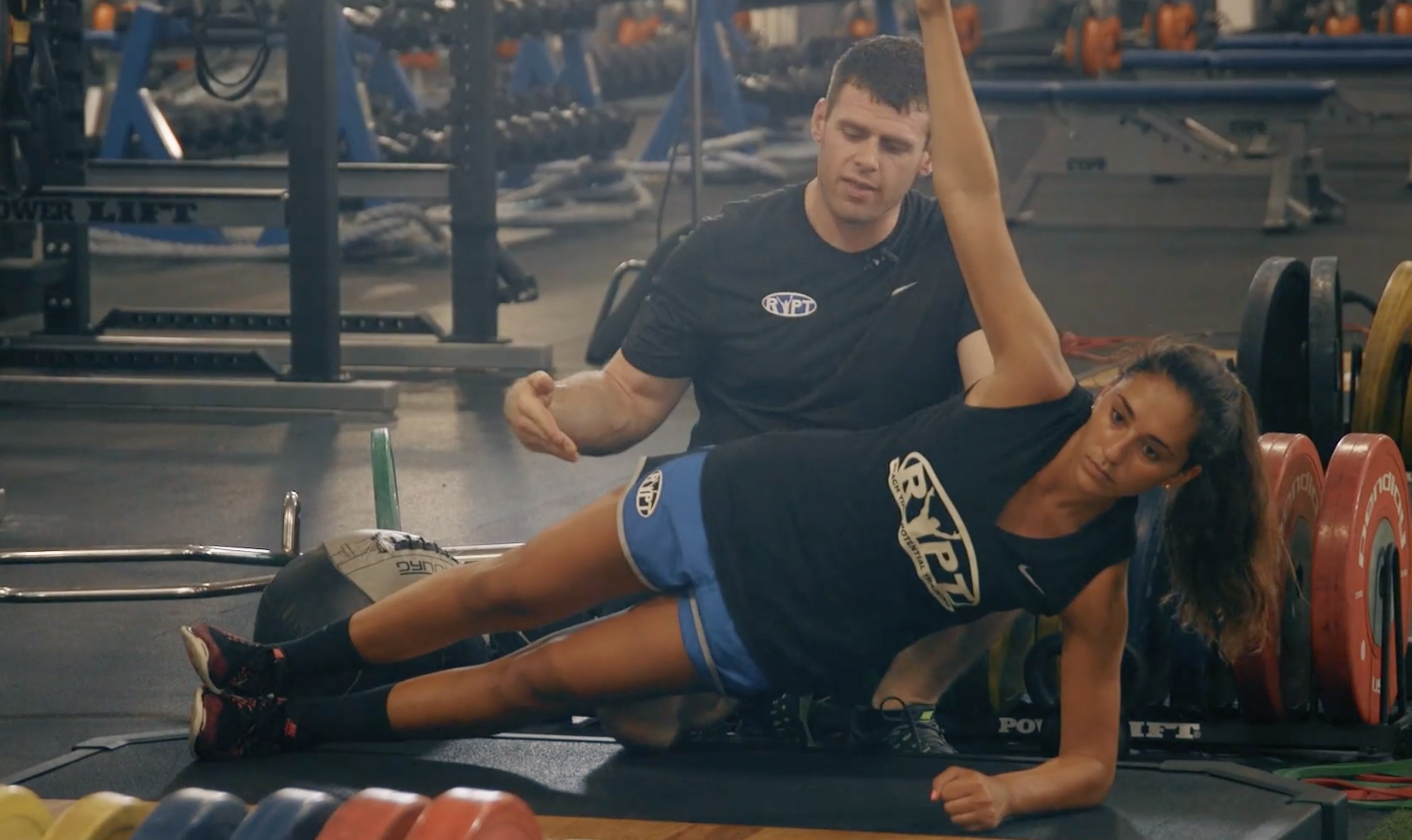The Next Level of Core Training – Dynamic Planks
By: Jim Smith

When you think about the most basic abdominal exercise, the first one that pops into your head is probably planks.
Planks are where a person lays out into a push-up position but instead of being on their outstretched hands, they rest on their forearms. In this position, the athlete or lifter will remain for a specific length of time. If the time exceeds one and a half minutes that is considered pretty good.
The benefits of planks include rehabilitating a back injury, glute activation, developing proficiency for bracing the torso with intra-abdominal pressure and an isometric contraction of the abdominals and developing muscular endurance of the muscles that stabilize, support and engage movements of the torso.
But in accordance with the Principle of Overload and the Laws of Chaos, there is a progression for all resistance training means. Progression of an exercise will increase the difficulty, which increases the demand and work capacity of the lifter and in turn, provides more adaptation and benefits.
So what is the next training progression for planks? Here are some of the most common modifications :

- Raising one foot off the ground (ensure the lifter doesn’t shift to the side to compensate by forcibly firing the glutes and bracing harder
- Add a weighted vest or back pack
Further unique adaptations can be obtained if we are relentless in our pursuit of our ultimate goal – real world strength. It is this real world strength that is developed not only with fixed, patterned strength training movements, but with random, rapidly adjusted reactive means. This is truer to real life and everyday movements.
Here is the modification that will produce the results we want. The lifter will setup in a conventional plank but with their feet on an elevated box and their forearms on a mini-trampoline.

This is a plank x 10!
This variation is much more difficult to stabilize because as the lifter adjusts, so does the base of support (the trampoline) they are resting on! We can of course increase the difficulty by externally loading the lifter or having them lift one leg, but we want to make this exercise really difficult. By having the lifter raise up onto their hands, more vibration can be achieved.

Now hit a plyometric push-up with the goal of restabilizing and restoring a static posture as quickly as possible. This creates a full body tremor that improves the integrity of the elbows, shoulders and hips.

Now, let's perform a one arm plank on this setup. This requires a greater glute and opposite oblique contraction to counterbalance the movement. The goal is to minimize the hips shifting and remain rigid. This movement can be held for time and increased in difficulty by a partner-assisted agitation.

For a more advanced movement a plyometric push-up can once again be engaged, but this time we will land on one arm.

Not only does this have amazing implications in a rehabilitative setting, but decelerative properties for the torso, back and shoulders as well. Sports that require ballistic upper body expressions (which is essentially all sports) or sports with high incidences of shoulder or hip injuries can benefit from this vibrational environment. The more vibration we can introduce, the more rapid the contractions, primary and antagonistic, of the engaged muscular and the greater stability of the kinetic chain. This creates a balance and teaches the athlete how to stabilize in opposition to random stimuli.
About the Author:
Jim Smith is a Certified Strength & Conditioning Specialist and an expert trainer who writes for Men's Fitness and the Elite Q/A Staff. Jim has been involved in strength training as a performance enhancement specialist for over 8 years and has worked with athletes from various sports who compete at various levels. He has published articles about his unique training style and innovative methods for many prominent strength and fitness related sites. He is also the authored of three renowned strength manuals. For more innovative training solutions, visit http://www.combatabtraining.com
For real core strength, check out:

Not trying to burst your bubble or anything but all of these planks pictured here are done incorrectly. His arse is too high in the air. You should do that (one extreme), then tilt your lower back downwards for the other extreme; and you want to be in between the two. Start with it on just a normal floor, with none of the advancements shown. I’ve been doing pilates for years and even the instructors with impressive CVs agree – if you can hold it for 20 or 30 seconds in that proper position you’re doing very well indeed.